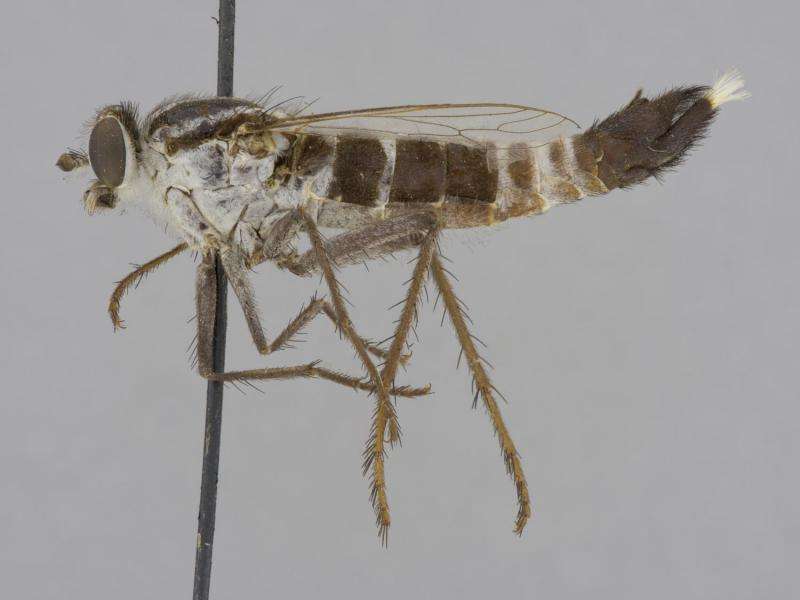Novel cybercatalog of flower-loving flies suggests the digital future of taxonomy

Charting Earth's biodiversity is the goal of taxonomy and to do so the scientists need to create an extensive citation network based on several hundred million pages of scientific literature. By providing a novel taxonomic 'cybercatalog' of southern African flower-loving (apiocerid) flies, Drs. Torsten Dikow and Donat Agosti demonstrate how the network of taxonomic knowledge can be made available through links provided to online data providers. Their work is available in the open-access Biodiversity Data Journal.
The present research showcases that the information cannot only be made available to the reader who follows the links, but also to machines that use the growing number of digital, online resources that are linked through persistent identifiers.
Primary data providers for taxonomic information such as species names (ZooBank), specimen images (Morphbank), species descriptions (Plazi), and digitized literature (BHL, Biodiversity Heritage Library; BioStor; and BLR, Biodiversity Literature Repository) play an important role in making data on species available in electronic form. Aggregators such as the Global Biodiversity Information Facility (GBIF) and the Encyclopedia of Life (EoL) gather this information automatically to distribute it even further to audiences beyond the reach of the life sciences.
In contrast to previous species catalogs, in cybercatalogs access to information is provided through links to open-access, online data repositories such as the ones listed above. Taxonomists and other users can now access this literature, species descriptions, and specimen records immediately without a search in a natural history library or collection. The cybercatalog takes advantage of a new publishing platform within the Biodiversity Data Journal that makes it easy to upload species information and links to data about these species through a CheckList template. Furthermore, the Biodiversity Data Journal now allows future updates and re-publications of the cybercatalog with the new unique persistent identifier (a DOI, Digital Object Identifier) whenever a new species is described or other taxonomic changes take place.
The authors argue that cybercatalogs are indeed the future of taxonomic catalogs since the online data in them are easily accessible to anyone.
"It is a taxonomist's dream to have online access to all previously published information on a species and through this step the discipline of taxonomy can (re-)position itself as a central resource within the life sciences and beyond to the public and society at large," add the authors. "Online access will also help to narrow the gap between the South and the North as a fantastic example of unhindered access to our knowledge of the global biological diversity, which is increasingly under pressure from human populations."
More information: Dikow T, Agosti D (2015) Utilizing online resources for taxonomy: a cybercatalog of Afrotropical apiocerid flies (Insecta: Diptera: Apioceridae). Biodiversity Data Journal 3: e5707. DOI: 10.3897/BDJ.3.e5707
Provided by Pensoft Publishers





















